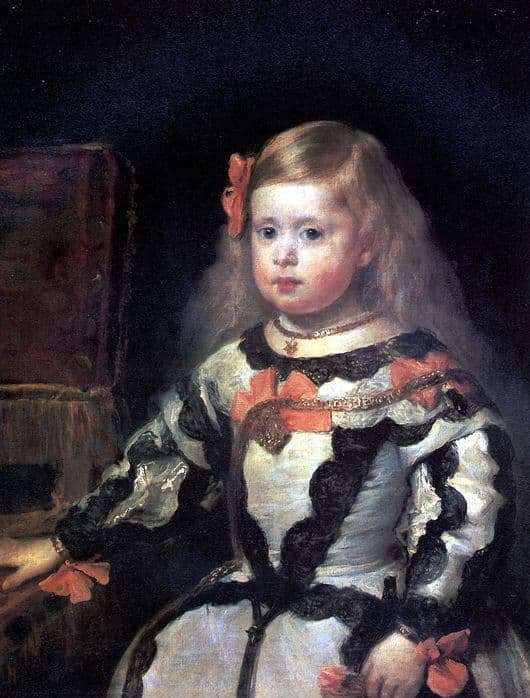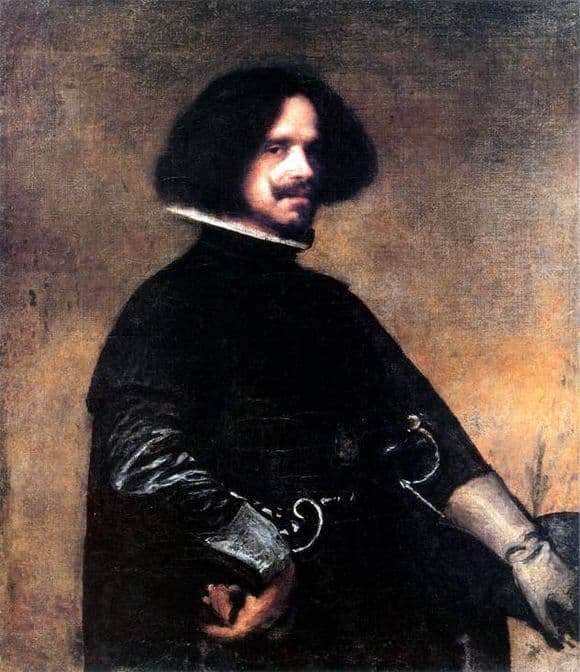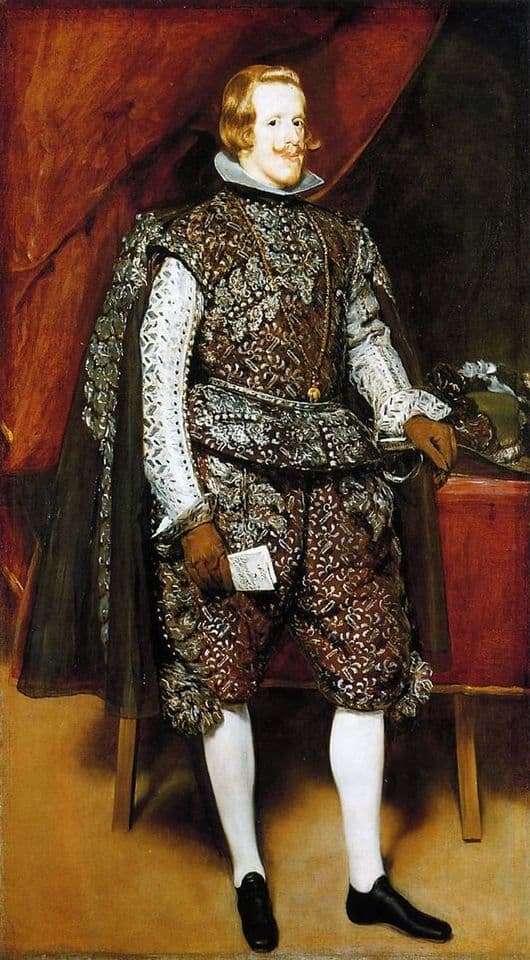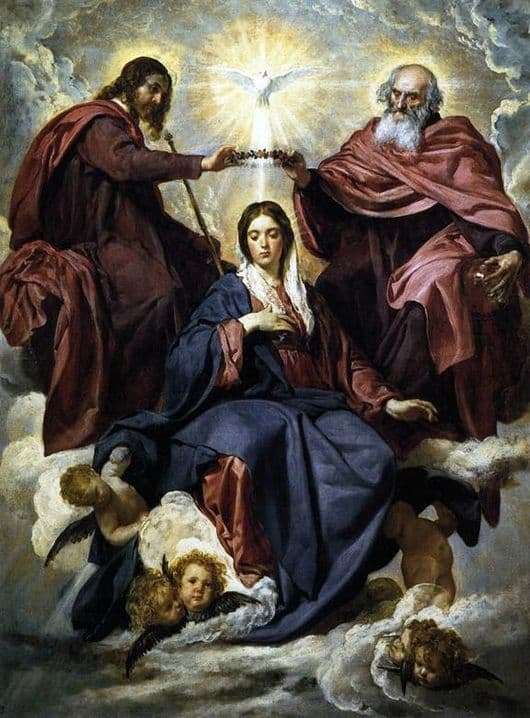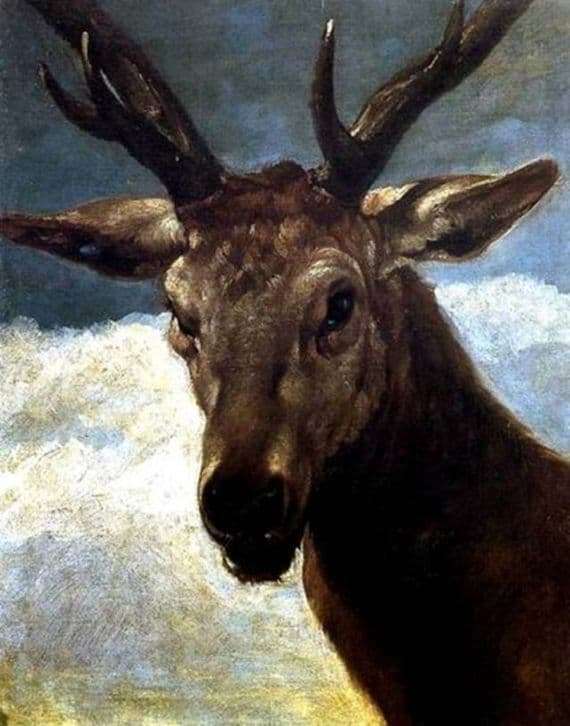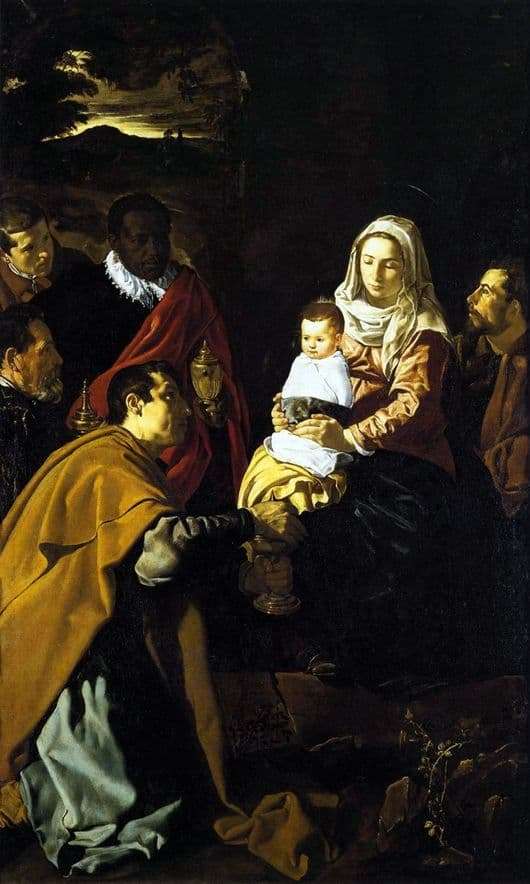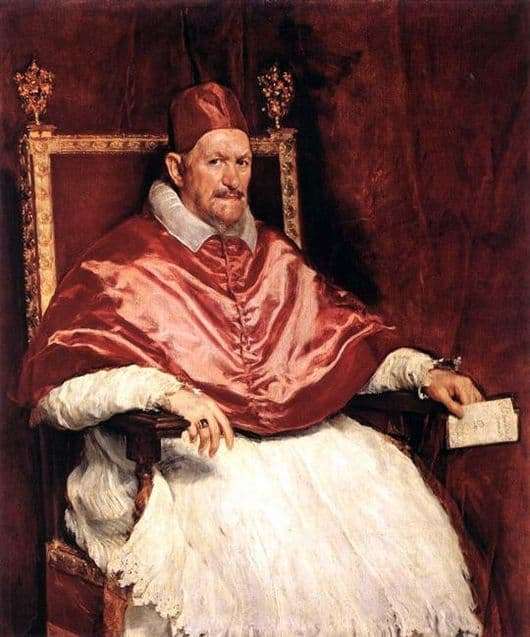
In the middle of his creative period, Velázquez visits the capital of Italy to buy local statues and paintings, as well as take pictures for further work in his native country. It was then that he accidentally saw Pope Innocent X.
As a professional artist in his picture, Velázquez could depict everything: the red walls of the room, inside of which stands a heavy gilded throne, and a red canopy lay on it. On the throne is 76-year-old Innocent X. His name instilled fear; he gave orders to burn heretics in the Inquisition, who allow themselves to rebel against the commandments that do not allow a person to reason.
In the picture, Velázquez captured the Pope in such a way that not one viewer can take his eyes off him. Snow-white robes, framed by a thin and elegant lace, could envy any then fashionist. Over the cassock there is a maroon robe, which wraps the shoulders and arms of the father. On his head rises bright skufia.
Especially strongly the artist was able to convey the face of the Pope. It is as if pale gray due to contrasting red tones. The mouth is wide enough, but the lips are very thin. The face is not framed by a thick beard and mustache. The nose is quite large. A little down to the bottom. And the eyes are not like the old man. They are small, light blue, but very expressive. Innocent X’s gaze practically pierces the reader. Senile hands, decorated with numerous rings, are lowered onto the armrests of the chair.
Velazquez tried to escape from the traditional rules and conventions relating to images of the popes. Many masters, not once portraying popes, did not dare to violate the established canons. However, Velázquez stepped over it, trying to capture not only the exterior, but also the inner state of the Pope.
Description of the painting by Diego Velázquez “Papa Innocent”
